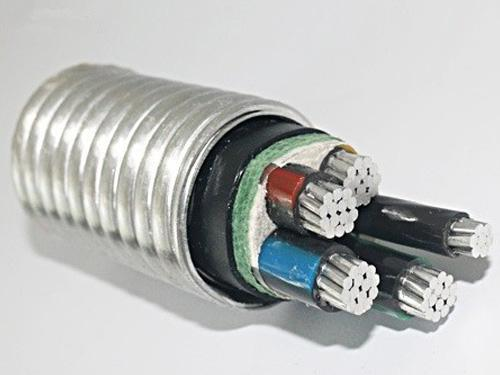Although there is only one word difference between aluminum core cable and aluminum alloy cable, there is still a big difference between the two;
For example, we identify them through product materials, basic concepts and product characteristics.
Next, follow [Cable Bao] Cable to learn the difference between aluminum core cables and aluminum alloy cables.
Different basic concepts
Aluminum core cable: Aluminum core cable is an aluminum conductor cable made of aluminum. The code name is expressed by the first English letter of aluminum.
Aluminum alloy cable: Aluminum alloy cable refers to a new material wire and ca
bl
e invented by AA8030 series aluminum alloy material as a conductor, using advanced technologies such as special pressing process and retreat treatment.
Corrosion resistance
The corrosion resistance of pure aluminum is better than that of copper, but the corrosion resistance of aluminum alloy materials is better than that of pure aluminum.
This is because the chemical elements such as rare resources added to the aluminum alloy can increase the corrosion resistance of the aluminum alloy materials, especially The electrochemical corrosion resistance performance overcomes the electrochemical corrosion problem that often occurs in pure aluminum joints.
Mechanical properties
Tensile strength and elongation
Compared with pure aluminum conductors, aluminum alloy conductors add special ingredients and use special processing techniques, which greatly improves the tensile strength and elongation to 30%, making them safer and more stable to use.
Bending performance
The bending performance of aluminum core cables is very poor, and bending can easily cause rupture.
The bending radius of aluminum alloy wires and cables is 7 times the outer diameter of the cable, which is far better than the 10 specified in the “Minimum Bending Radius during Cable Construction” in GB/T12706 Times – 20 times the outer diameter of the cable.
Flexibility
Pure aluminum cables only need to be twisted at a certain angle a few times before the conductors are prone to cracking or breaking, which can easily cause safety accidents.
However, aluminum alloy wires and cables can withstand dozens of bends, avoiding the problems that occurred during the construction and use of pure aluminum cables.
The safety hazards of accidents are eliminated, and the safety and stability performance is greatly improved.
Electrical conductivity
Aluminum alloy conductors are emerging conductor materials formed by adding rare earth resources, magnesium, copper, iron and other elements to pure aluminum and forming them through an alloy process.
As we all know, after adding various other alloying elements to aluminum, the conductivity of the conductive parts will decrease. And through process control, the conductivity can be restored to a level close to that of pure aluminum, making it have the same characteristics as pure aluminum. The approximate current carrying capacity is
Creep resistance
The main reason why aluminum alloy cables are gradually entering the domestic market is the shortage of copper metal resources and the continued rise in copper prices.
This aluminum alloy material has advantages over copper in terms of toughness, tensile strength, and weight, and under the same current carrying capacity, the die section of the super alloy material is 1.2 times that of steel. The price is also cheaper than copper.
Post time: Jan-16-2024








